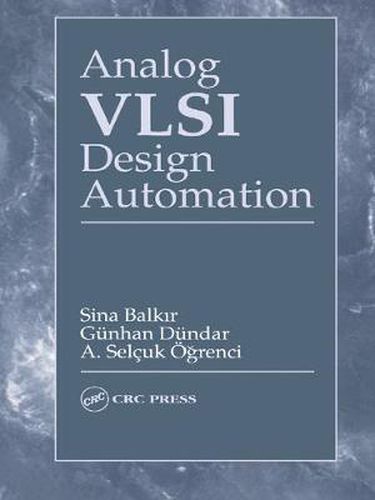Readings Newsletter
Become a Readings Member to make your shopping experience even easier.
Sign in or sign up for free!
You’re not far away from qualifying for FREE standard shipping within Australia
You’ve qualified for FREE standard shipping within Australia
The cart is loading…






The explosive growth and development of the integrated circuit market over the last few years have been mostly limited to the digital VLSI domain. The difficulty of automating the design process in the analog domain, the fact that a general analog design methodology remained undefined, and the poor performance of earlier tools have left the analog world with few, if any, options for automated VLSI design.Analog VLSI Design Automation may well mark the dawn of a new era. It describes a fully integrated, top-down approach to analog VLSI design automation and presents a methodology for each level of the design hierarchy. The authors define an analog VLSI design automation flow in which every tool has its predefined objectives and interfaces. They present working examples for each tool, and demonstrate the validity of their approach by running their design automation system from the top to the bottom levels in three different case studies.Technologies like systems-on-a-chip (SOCs) have created a pressing need for automated design tools capable of handling analog circuit blocks. The ideas presented in this book are fully adaptable to various design classes. Using these ideas, you will be able to develop new methodologies and algorithms that will significantly reduce design costs and time to market for many practical systems.
$9.00 standard shipping within Australia
FREE standard shipping within Australia for orders over $100.00
Express & International shipping calculated at checkout
The explosive growth and development of the integrated circuit market over the last few years have been mostly limited to the digital VLSI domain. The difficulty of automating the design process in the analog domain, the fact that a general analog design methodology remained undefined, and the poor performance of earlier tools have left the analog world with few, if any, options for automated VLSI design.Analog VLSI Design Automation may well mark the dawn of a new era. It describes a fully integrated, top-down approach to analog VLSI design automation and presents a methodology for each level of the design hierarchy. The authors define an analog VLSI design automation flow in which every tool has its predefined objectives and interfaces. They present working examples for each tool, and demonstrate the validity of their approach by running their design automation system from the top to the bottom levels in three different case studies.Technologies like systems-on-a-chip (SOCs) have created a pressing need for automated design tools capable of handling analog circuit blocks. The ideas presented in this book are fully adaptable to various design classes. Using these ideas, you will be able to develop new methodologies and algorithms that will significantly reduce design costs and time to market for many practical systems.